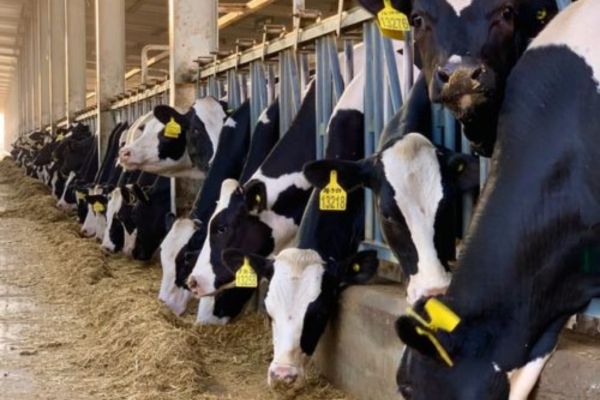MMN March 2024 – How Long are your Heifers Lasting?
14 March 2024According to the recently published NMR 500 Herd KPI Report for 2023, the medium number of lactations per cow at exit was 3.6 and the culling rate was 28%, with the top 25% of herds achieving 4.2 lactations at exit and a culling rate of 22%.
When it came to looking at the longevity of 1st lactation heifers, 17% failed to calve down for a 2nd time and around one quarter exited within the first 100 days. As a heifer calving at 24 months does not pay back her rearing costs until at least halfway through her second lactation, heifer longevity is key to profitability considering that rearing costs account for around 20% of total production costs and it costs on average £2000 to rear a heifer to the point of calving.
How good the heifer rearing system is can be critically assessed by two measures:
- Rearing efficiency – this refers to the percentage of heifers born alive that calve at (or below) the target age at first calving. This provides an indicator as to how good the rearing process is. The target is >85%.
- Heifer effectiveness – this is a measure based on the rearing efficiency but only includes heifers that have completed three lactations. The target is >75%.
The target for heifers to last for three lactations is challenging and the likelihood of achieving this target will greatly depend on the herd’s culling policy, number of replacements coming through and the desire to make space for what should be a genetically superior heifer coming into the herd.
It is a fact that the performance of heifers in their first lactation is closely related to how well they perform in the first few weeks of life. Nutrition has a huge part to play with generally the more milk that is fed, the higher the growth rate. When comparing ad lib milk systems with restricted milk systems, studies have shown that heifer calves on ad lib milk gained on average 190g/day more in the first five weeks of life and then went on to produce on average 677kg more milk in their first lactation, compared to heifers that were fed on a restrictive milk feeding system.
Performance is programmed early on in life, with nutrient supply regulating the rate of cell division in the first 50 days after birth. After that, growth of tissues and organs is through cell growth so maximising nutrient supply in the first few weeks has an impact on the growth of mammary tissue (and the number of milk secreting cells), as well as other organs. Some studies comparing restrictive versus intensive feeding of calf milk replacer showed that the more intensively fed calves had nearly six times more milk secreting cells within the mammary tissue and had significantly greater mass of the thymus and spleen, organs critical for immunity. While it has been common guidance to feed calves six litres of milk (at 15% inclusion of milk powder, so 900g/day), many farmers are seeing better growth performance (and health benefits) of higher rates. It is not unusual to hear of calves being fed in the region of 8-10 litres of milk and between 1 – 1.5kg powder/day.
Higher rates of milk feeding suits automatic feeding systems when calves can drink little and often and it more difficult to implement in a bucket feeding system without introducing a 3rd feed, which greatly increases labour. However, care must be taken when feeding high rates of milk to ensure a minimum 14-day step down period to ensure calves are eating sufficient starter feed in preparation for weaning. Ideally calves should be eating 2kg starter feed/day when weaned at 8 weeks of age but 3kg would be the target for calves being weaned at 12 weeks of age.
While heifer longevity will be influenced by culling decisions based on milking performance, fertility, health and management in that first lactation, the growth performance and health of calves in those first few weeks of life go a long way to help set them up for a long and productive life.
lorna.macpherson@sac.co.uk; 07760 990901
Sign up to the FAS newsletter
Receive updates on news, events and publications from Scotland’s Farm Advisory Service

